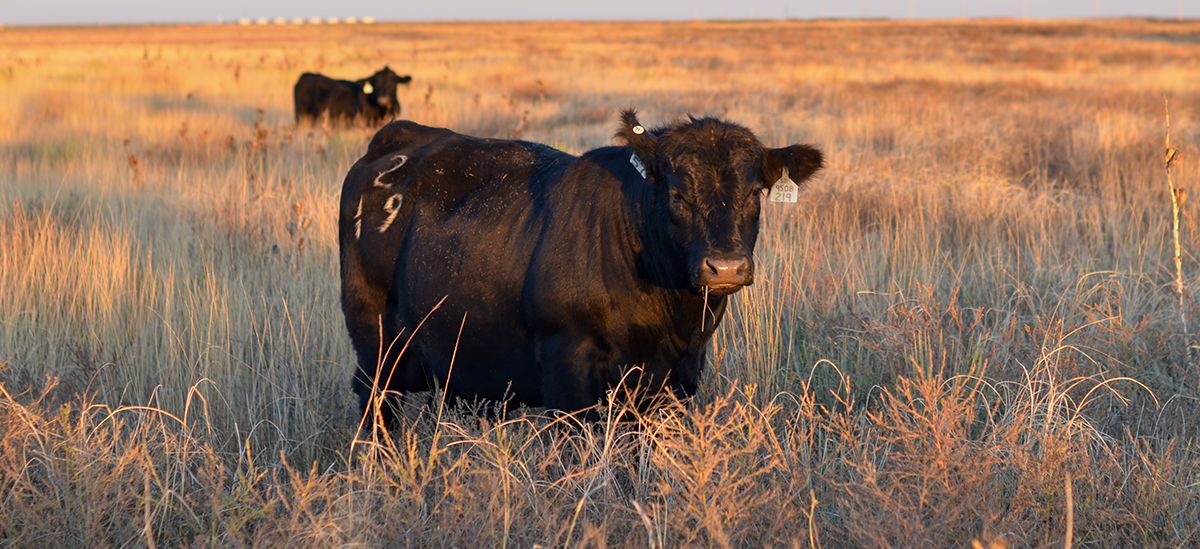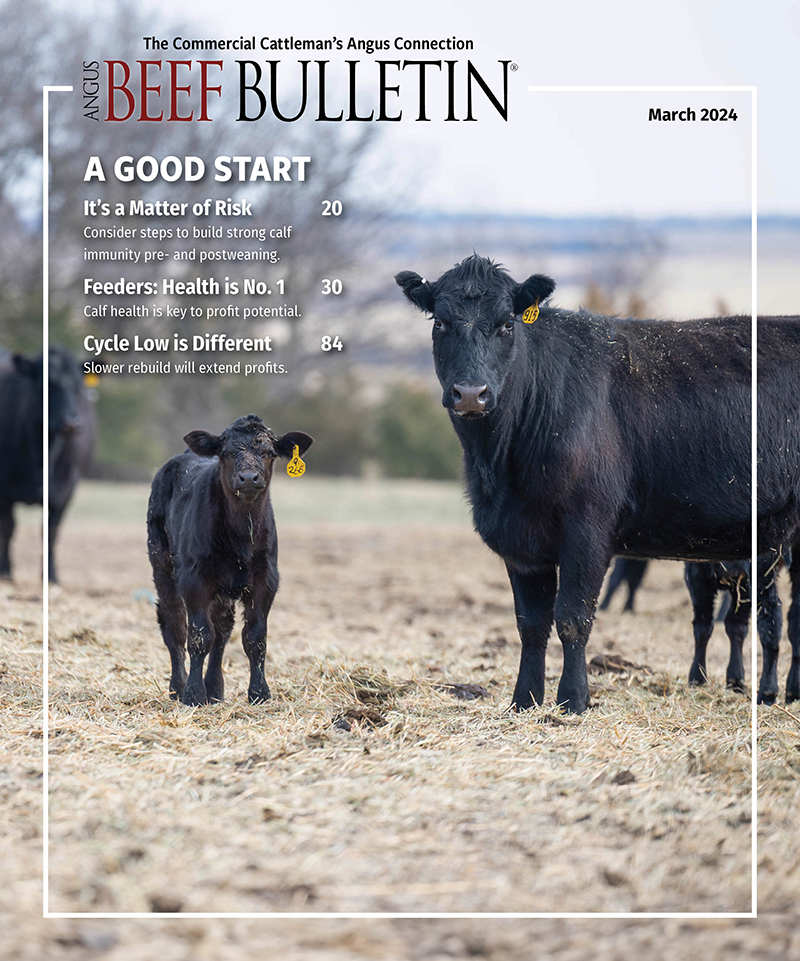
From the Field
Bull management tips from three of your Association regional managers.
The search for bulls may be over for 2024. But just because you have secured the next genetic powerhouse for your herd doesn’t mean the work is over.
Whether your bull was developed on grass or managed in a growyard, the age of the bull, the number of cows in your herd and the environment you operate within can all alter management needs. What can cattlemen do to nurture their recent investment? We asked American Angus Association regional managers Shawn Gray, Jeff Mafi and Landon Andrews.
How was he developed?
Across the United States, the development of future herd sires can look a bit different. Though there is no singular correct way to develop bulls, producers need to be aware of what each method could mean — nutritionally — for their recent purchase.
“We have to be mindful of the microflora of the rumen and how — if bulls are on a higher starch ration — you need to give them the chance to transition,” says Gray, regional manager for Region 13. “What works better is purchasing those bulls ahead of when you need to turn them out to give them time to acclimate.”
Gray’s recommendation is to purchase bulls 60 days ahead of turnout and allow them to transition gradually to a more forage-based diet. By doing so, producers can avoid a host of issues, including bulls expending calories trying to breed cows while also going through the potential change from bull development rations to primarily forage.
What does his office look like?
Development of bulls can differ greatly, but there are some basics to keep in mind when bringing home a young bull.
“In an ideal situation, we would keep them all a similar age, not turn them out with older bulls and turn them out somewhere where they have access to exercise,” says Mafi, regional manager for Region 8, noting that managing bulls in that way may not be possible for all cattle producers due to space or labor constraints.
Regardless, Mafi advises producers to consider the environment they’re purchasing bulls from and how they were managed, as well as where bulls will be turned out. The goal is to make their initial transition into an operation as smooth as possible.
Why are papers important?
Like the title of a vehicle, registration papers can provide producers with a vault of information surrounding the genetics of a bull, as well as what they might expect from him in the future. With data including bull inventories, expected progeny differences (EPDs), pedigrees and more, a plethora of documentation is available at a producer’s fingertips if their bull is transferred, says Andrews, regional manager for Region 11.
With the transfer of registration papers, buyers are issued an affiliate member code. That code provides buyers with access to AAA Login on www.angus.org including updated EPDs on your bulls, upcoming sales and information on the latest marketing opportunities for Angus genetics.
Having your bulls transferred into your name, keeping track of your bull inventory and documenting bulls you take to town are all things producers can use AAA Login to manage. Being able to document the Angus parentage on your calves opens a host of breed-specific marketing opportunities.
“The amount of marketing opportunities available to calves backed up by registered Angus bulls goes a long way,” according to Andrews, advising producers to take advantage of marketing programs available for calves with documented Angus sires.
Bringing it together
Managing young bulls can be a challenge, but keeping the basics in mind can ensure they stay in a comfortable range while being given the time to mature to their full potential. No matter the method or location of development, producers can capitalize on their investment in Angus genetics by working with their bull’s breeder to confirm transfer of registration and by visiting the Commercial page at www.angus.org.
Editor’s note: “From the Field” is a regular Angus Beef Bulletin EXTRA column featuring advice, industry news and Angus updates from regional managers of the American Angus Association. For information on how to contact your regional manager, please visit https://www.angus.org/assoc/RM.



